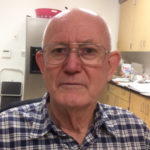May 3, 2019
 by Arthur Murray
by Arthur Murray
Teaching about potential and kinetic energy is always exciting, whether your students are in kindergarten or college. There is so much to explore, and the world is full of examples of these types of energy in action. Any time that you’re chewing gum, typing on your computer, or launching a rubber band into the air… you are demonstrating potential and kinetic energy in all its glory.
Read the rest of this entry »
 1 Comment |
1 Comment |  Elementary level, energy, High School level, Middle School level | Tagged: Educational Innovations, energy, engineering, force and motion, homeschool, parent friendly, phenomenon based learning, phenomenon-based science, science, thermal energy, variables |
Elementary level, energy, High School level, Middle School level | Tagged: Educational Innovations, energy, engineering, force and motion, homeschool, parent friendly, phenomenon based learning, phenomenon-based science, science, thermal energy, variables |  Permalink
Permalink
 Posted by Donna Giachetti
Posted by Donna Giachetti
April 18, 2019
 By Tami G. O’Connor
By Tami G. O’Connor
By far, my students’ favorite way to review for tests and quizzes was a game we called “Keep Your Shirt On.” I found that I was able to use this game for virtually any subject and any grade level. No matter what subject, my students’ scores increased dramatically! As long as your students can read, they can use this tool.
Keep Your Shirt On was a great review game before math tests (multiplication, division, addition, subtraction or properties), Social Studies (state capitals, explorers, landforms…) and especially Science!
Read the rest of this entry »
 Leave a Comment » |
Leave a Comment » |  Elementary level, Middle School level, STEM | Tagged: DIY, Educational Innovations, hands-on activity, phenomenon based learning, science, STEM, variables |
Elementary level, Middle School level, STEM | Tagged: DIY, Educational Innovations, hands-on activity, phenomenon based learning, science, STEM, variables |  Permalink
Permalink
 Posted by Donna Giachetti
Posted by Donna Giachetti
April 5, 2019
 By Marty Mathiesen
By Marty Mathiesen
During the electricity unit in my high school physics class, I like to do an activity in which students determine the effect of having batteries placed in a series circuit and also in a parallel circuit. We explore questions such as What are the similarities? The differences? What are the advantages of each method? Do you see any patterns?
 Leave a Comment » |
Leave a Comment » |  College level, electricity, Elementary level, experiments, High School level, Middle School level | Tagged: DIY, Educational Innovations, electricity, energy, experiments, green energy, hands-on science, light, parent friendly, phenomenon based learning, phenomenon-based science, science, variables |
College level, electricity, Elementary level, experiments, High School level, Middle School level | Tagged: DIY, Educational Innovations, electricity, energy, experiments, green energy, hands-on science, light, parent friendly, phenomenon based learning, phenomenon-based science, science, variables |  Permalink
Permalink
 Posted by Donna Giachetti
Posted by Donna Giachetti
February 22, 2019

By Chris Herald
NSTA STEM Teacher Ambassador 2017
I always love when Spring arrives because we start physics topics in my eighth grade physical science class! Don’t get me wrong—my first love is chemistry and I have a Master’s degree to prove it—but there’s just something about physics in the Spring. My students delve into the topics of speed and momentum with great gusto. Two highlights? Rolling marbles down a ruler and designing their own Hot Wheels experiment. Not only are these students exploring some key physics topics, they are ALSO getting a chance to dabble in engineering: a great combination!
Read the rest of this entry »
 Leave a Comment » |
Leave a Comment » |  College level, construction, Elementary level, energy, engineering, High School level, Middle School level, Physics, STEM | Tagged: construction, DIY, Educational Innovations, engineering, experiments, hands-on activity, homeschool, parent friendly, PBL, phenomenon based learning, phenomenon-based science, Physics, science, STEM, variables |
College level, construction, Elementary level, energy, engineering, High School level, Middle School level, Physics, STEM | Tagged: construction, DIY, Educational Innovations, engineering, experiments, hands-on activity, homeschool, parent friendly, PBL, phenomenon based learning, phenomenon-based science, Physics, science, STEM, variables |  Permalink
Permalink
 Posted by Donna Giachetti
Posted by Donna Giachetti
 by Becca Fanucci
by Becca Fanucci


 Posted by Donna Giachetti
Posted by Donna Giachetti  by Arthur Murray
by Arthur Murray By Tami G. O’Connor
By Tami G. O’Connor By Marty Mathiesen
By Marty Mathiesen